Biodiversity of the Azores
A world to be explored!
The Azores belong to the Macaronesian Biogeographic Region which also includes the archipelagos of Madeira, the Canary Islands, Cape Verde and the Savage Islands and part of the western coast of Africa. The botanist Philip Baker (1860) initially used the name Macaronesia referring only to the archipelagos of the Azores, Madeira, the Canary Islands and Cape Verde. The geologic, geographic and climate conditions of the Azores provide a great variety of singular biotopes, ecosystems and landscapes with many habitats and an interesting diversity of species, some of them endemic.
 From hydrothermal vents, deep in the ocean, to the Pico Mountain, the highest peak in Portugal, numberless organism spring to life, such as bacteria a thousand times smaller than a millimetre, the 180-ton blue whale, birds that you can only find in the Azores, such as the Monteiro's storm-petrel, whose habitat is on the islets of Graciosa, and the Azores Bullfinch, that lives in Serra da Tronqueira, troglobitic arthropods, volcanic cavities or even the Marsilea azorica, found in a damp area on Terceira Island  these are just some examples of the high biodiversity of the Azores.
From hydrothermal vents, deep in the ocean, to the Pico Mountain, the highest peak in Portugal, numberless organism spring to life, such as bacteria a thousand times smaller than a millimetre, the 180-ton blue whale, birds that you can only find in the Azores, such as the Monteiro's storm-petrel, whose habitat is on the islets of Graciosa, and the Azores Bullfinch, that lives in Serra da Tronqueira, troglobitic arthropods, volcanic cavities or even the Marsilea azorica, found in a damp area on Terceira Island  these are just some examples of the high biodiversity of the Azores.
There are about 400 species of algae identified in the archipelago, 7 of them registered as endemic. From the 460 fish species (spread by 142 families) only two are considered endemic, even if an important part of the fish species abounding near the shore are thought to be endemic to Macaronesia.
Given that the Azores are an important transition area between the tropics and the temperate regions of the North Atlantic, these islands work as a breeding, growing and resting area for many marine species. The Azores even have quite a diversity of migratory species, such as fishes, water turtles, birds and about 25 species of cetaceans.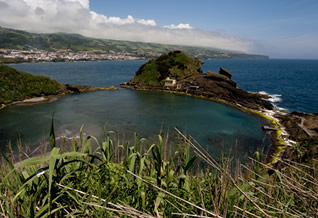
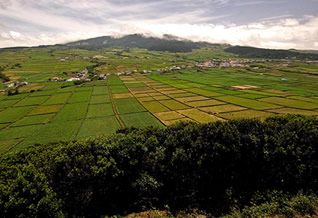
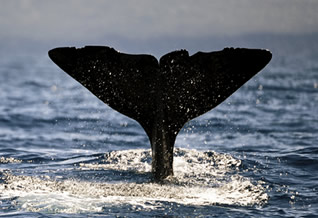
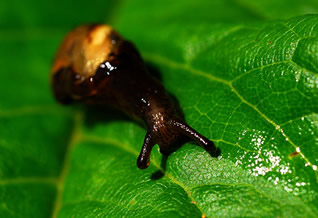
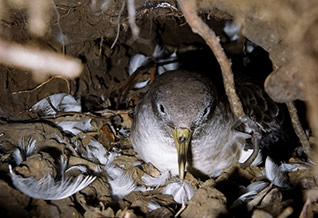
In the Azores terrestrial biota, there are about 4,487 known species and subspecies of lichens, plants and animals.
The arthropods are the most diverse group with 2,227 counted species and subspecies, from which 267 are endemic.
There are also 947 vascular plants (68 being endemic), 632 lichens (12 being endemic) and 438 bryophytes (9 being endemic).
In the Azores, there around 65 identified bird species from which 12 are endemic. However, only 35 of these species nest in the region.
Concerning mammals, there are only two bat species, one of them being endemic, the Nyctalus azoreum.
There are 111 known mollusk species from which 49 are endemic, 80 nematode species (2 are endemic) and 21 annelid species. All these species live in characteristic habitats, some of them even rare, from the shore to the mountains, in volcanoes, caves, forests, woods, meadows, pastures, bogs, lakes and streams.
This biodiversity justifies the Regional Network of Protected Areas, comprising 124 Protected Areas, 22 of them being on Pico Island. We would like to stress the 4 Special Areas of Conservation and the 4 Special Protection Areas under the Natura 2000 Network.
The Landscape of the Vineyard Culture of Pico Island has been classified by UNESCO as a World Heritage Site.
Under the UNESCO's programme Man and Biosphere, the islands of Corvo, Graciosa and Flores were classified as Biosphere Reserves.
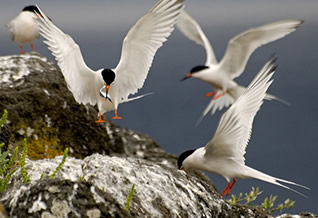
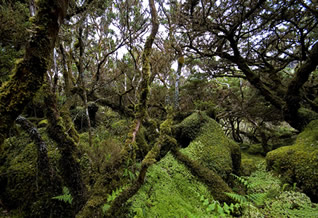
© siaram.azores.gov.pt
© siaram.azores.gov.pt
© Direitos reservados
© siaram.azores.gov.pt
© siaram.azores.gov.pt
© siaram.azores.gov.pt